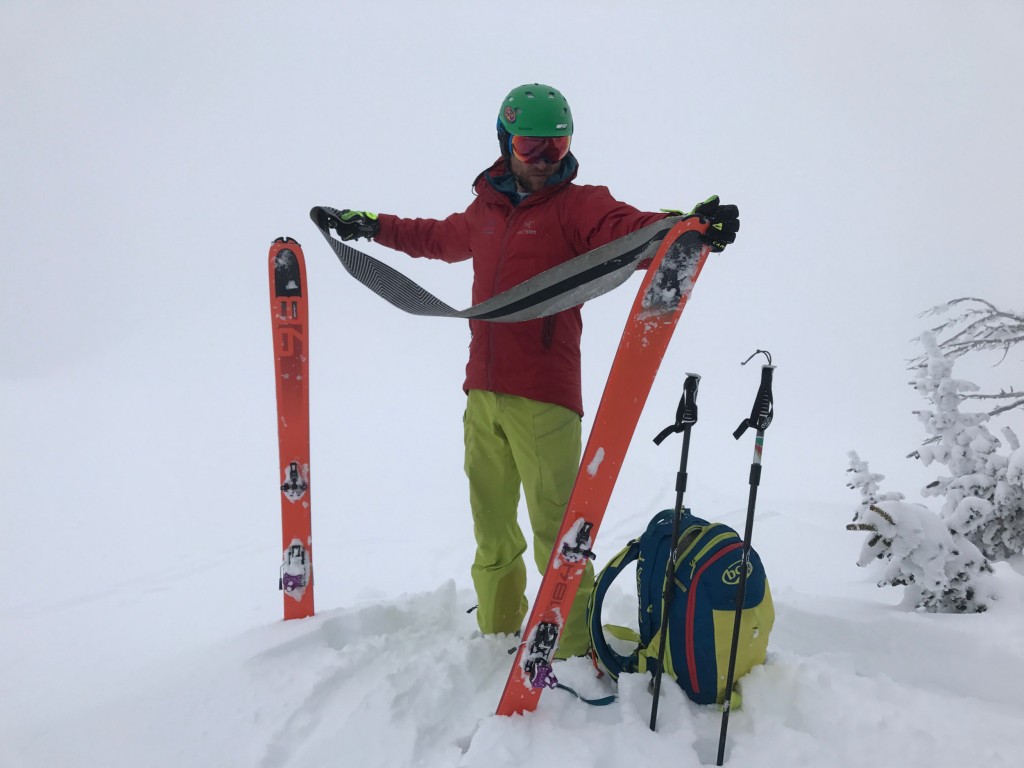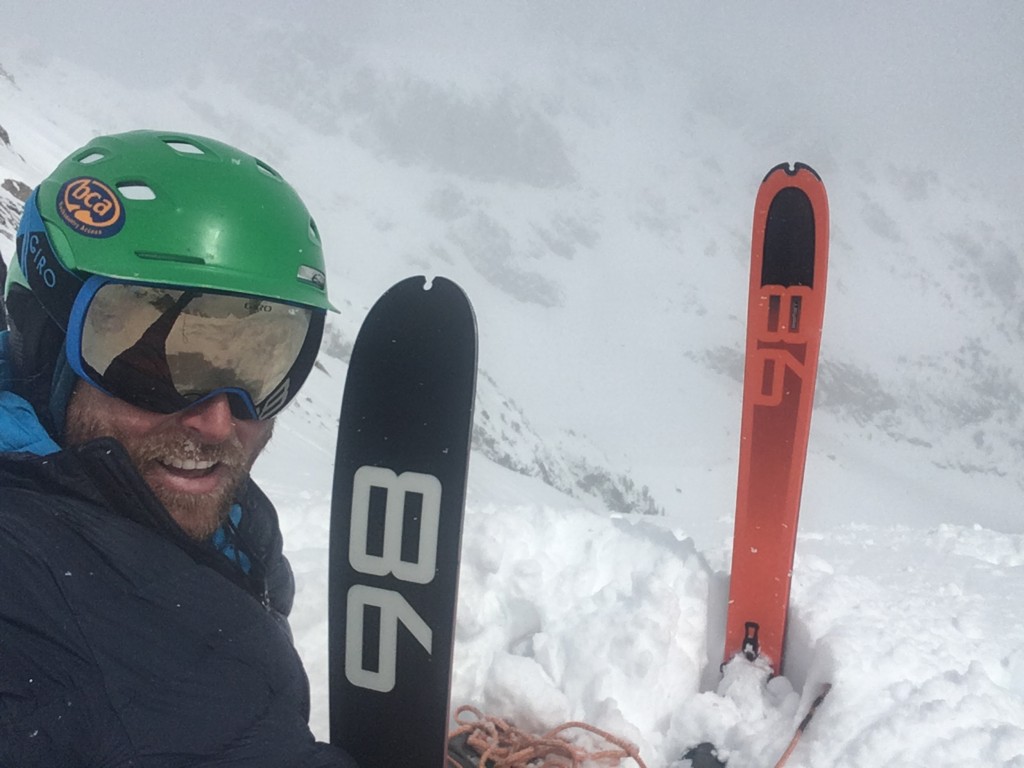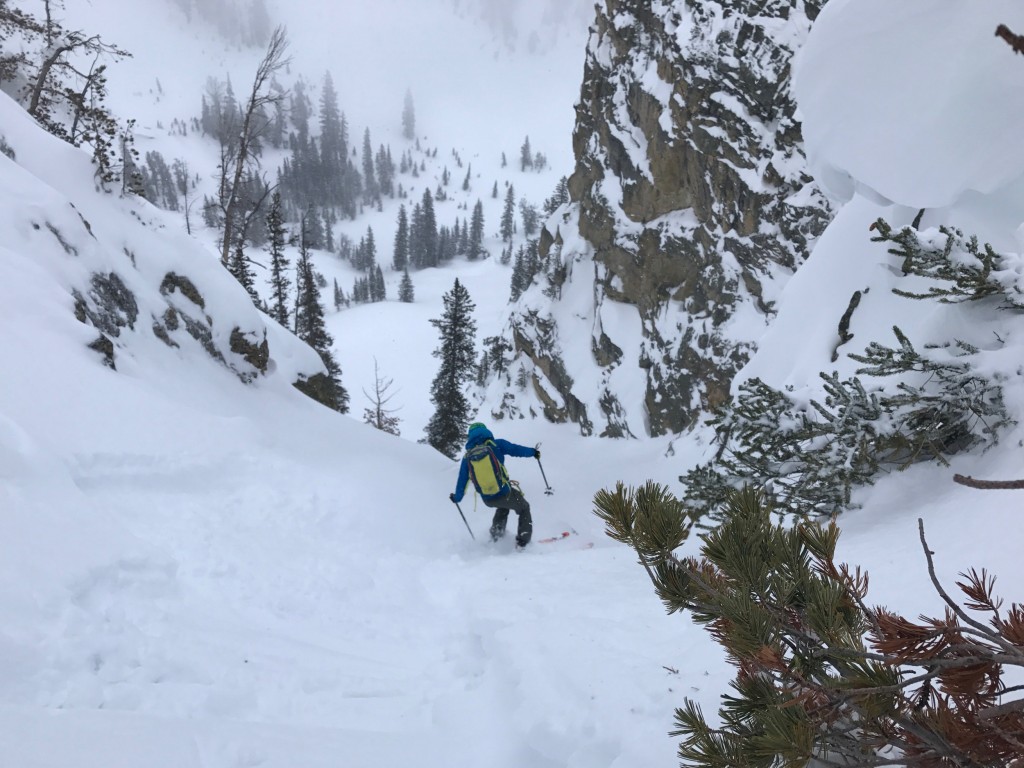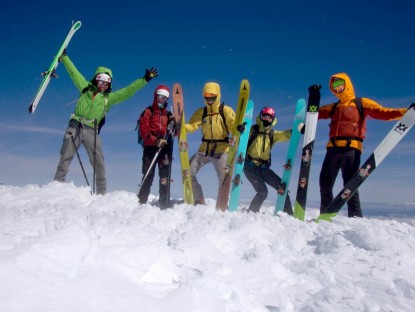Dynafit Beast 98 Review
Our Verdict
Our Analysis and Test Results
The Dynafit Beast 98 is a downhill oriented touring ski. What does that catalog copy even mean? To us, and in our extensive experience with it, it means that Dynafit made an alpine all-mountain ski and stripped away some extra weight by optimizing dimensions and choosing excellent materials. These do indeed ski sort of like an all-around alpine resort ski, at a more reasonable weight for touring. We like that. These strike a good balance, as long as the balance you seek optimizes for downhill performance.
Performance Comparison
Weight
There was a time when a 3000-gram pair of skis would have been the lightest touring skis available. Especially at these dimensions, the historical record might call these lightweight skis. Compared to the ultralight skis currently available, these are relatively heavy. Just under seven pounds for the pair is decent, but not great. The average backcountry skier, for instance, will start dragging her or his legs after 4-5000 feet of touring with these big guns. Drop a few hundred grams per ski, and your legs will notice the difference.
Stability at Speed
Dynafit skis have come a long way. Our test team has been assessing touring skis for well over a decade. In that time, Dynafit brand skis have improved in stability. At one time, Dynafit skis were super light, but not that great going downhill. Dynafit dabbled in making big, heavy alpine style skis for a little bit, but just couldn't compete with the established manufacturers. The Beast line and specifically this tested Beast 98 represents a sweet spot. These are definitely touring skis when it comes to weight and shaping, but they ski downhill with remarkable stability. For the mass, our test team is surprised by the stability; that this performance sweet spot comes from Dynafit surprises us even further.
In fast Grand Teton National Park powder laps and chopped up old pow on Teton Pass, the Beast 98 does exactly what you want it to do, with minimal input. Whether driven by big boots or ridden more delicately with light boots and whether the skier is a lifelong technician or new backcountry rider, we found great confidence in opening up the pace.
Firm Snow
98mm waist width is pushing the limits of what we consider good dimensions for firm skiing. We know that that isn't a popular perspective, but we're not afraid to question the trends. In the overall wild snow ski market, 98mm is considered narrow to average. For us, it is on the wide end, especially for firm riding. Skis this wide need to be torsionally stiff and driven with big boots to instill confidence on the firm stuff, generally. The Beast 98, on a ski mountaineering course in a week-long GTNP drought, held its own in steep and rock hard couloirs. The even flex and torsional rigidity grabs even the hardest of boilerplate. Of course, geometry matters. Narrower skis, all else equal, will do better on firm snow.
Powder
A pair of 2x4 house studs would ski powder well. Powder is just that great. Nonetheless, we work hard to discern between the skis we test. That discernment takes days and days and miles and miles of high country powder. In recent years our test team has done the bulk of its powder testing in Grand Teton National Park. We look for snappy short radius turns and parallel tracking in faster turns. We look for bouncy float and smooth edge activation. We got all that, for the most part, with the Dynafit Beast. The longitudinal stiffness definitely rewards higher speeds and longer radius turns. In the trees and at lower speeds, the skier has to work harder to shorten up his or her turns on the Beast 98.
All those skis that score better in powder than the Beast 98 are more versatile in their turn radius.
Crud/Poor Snow
Heavier skis ride tough snow better than lighter skis, for the most part. We wish we could report that there was some secret ingredient or construction attribute that makes a ski ride breakable crust with confidence, but weight is the most directly correlated with tough snow performance. Sure, shape and materials matter, but not nearly as much as weight, in our experience.
The above-average mass of the Beast 98, backed up with excellent construction attributes, blasts reliably through tough snow. The only skis that do better in slop and breakable are about the same weight or heavier, and are much, much more expensive. Also, all those skis that do better in tough snow are current or past award winners. The Beast 98 and its favorable tough snow performance is in rare company.
Value
The skis that score better, overall, are all more expensive than the Beast 98.
Conclusion
If you can look inside long and hard and conclude that you really do prefer downhill performance to uphill efficiency, at least just a little bit, consider these skis. If you are at all efficiency-minded, these are noticeably heavier than you should prefer. Finally, even though it doesn't show up elsewhere in our review, we must note that a major perk of these skis is that they are readily compatible with Dynafit's excellent “SpeedSkins”. This alone might be enough to tip the balance in their favor. SpeedSkins are among the best on the market and only work with Dynafit skis or with heavily modified skis from other manufacturers.
All around products do well in our scoring rubric. These are all-mountain backcountry skis that lean ever so slightly to the downhill performance end of the spectrum. For most backcountry skiers, they will be just a little heavier than ideal, and the narrow subset of users that don't care about weight at all will squeeze a little more downhill performance out of a heavier ski. If you find yourself wanting to charge harder than most touring skis allow, or if you find yourself wishing the alpine ski offerings were a little lighter, this might just hit your sweet spot as an all-around human-powered backcountry ski.










